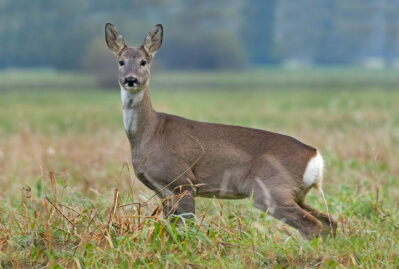Ready to learn about local ecology!
What's this?
River's Park Edge and its partners are pleased to offer all visitors a fun, educational challenge to locate ecological clues thoughout the park.
Learn more
White-tailed deer
Odocoileus virginianus
By 1898, the white-tailed deer had nearly vanished from Iowa. Unregulated hunting resulted in overharvesting for food and hides, causing white-tailed deer populations to plummet to the point of near extirpation, which means locally extinct. Thanks to reestablishment efforts in the early 20th century and the adaptability of these animals, the population of white-tailed deer has recovered, and they are once again a common sight in Iowa.
Scroll to learn more
Prev NextWhat else can I find?
River's Park Edge is home to many points of interest. But if you found this information interesting, keep seeking out more clues.
Seek for more ecology clues

During spring to early summer, does (female deer) give birth to one or two fawns (baby deer). Does teach their fawns to protect themselves by staying very still, relying on their speckled coats to blend into the landscape. Does spend the majority of the day away from their fawns to keep predators unaware of the fawn’s location, only returning to feed their fawns for a few short periods of time. When well-intentioned people find a fawn with no mother around, they may think the fawn was abandoned and take it to a rehabilitator. Never pick up a fawn unless you are absolutely sure the mother is dead and not returning.
In the summer, bucks (male deer) grow their antlers. Their antlers are made of bone and covered by a layer of skin called “velvet” that protects and feeds them with blood and nutrients, which is how the antlers grow.
In the fall, deer go into their breeding season, called rut. During the rut, bucks become more aggressive and territorial, establishing dominance among other bucks and pursuing does. The rutting season means more deer are on the move, so it’s smart to be especially alert when driving a vehicle in areas with deer.
Bucks shed their antlers in winter when the breeding season is over, between January to March.
Learn more about deer from the Iowa Department of Natural Resources.
